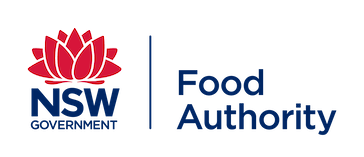Sydney Harbour seafood
All commercial fishing in Sydney Harbour has been halted due to elevated levels of dioxins detected in some fish and seafood. The area affected includes all of Port Jackson and it's tributaries.
Recreational fishing is not closed but eating of Harbour fish should be limited (see How much can I eat? below). Fish can be caught and released.
What are dioxins?
Dioxins are a group of chlorinated chemicals that originate from industrial pollution or are generated in natural processes such as bush fires. They are chemically stable and can stay in the environment for a long time. Dioxins can accumulate in the body fat of animals and humans.
Where do dioxins come from?
Residues of dioxins in seafood caught in Sydney Harbour/Parramatta River are likely to have their sources in contaminated sediments on the bottom of Homebush Bay. Current levels are likely due to many years of industrial activities previously along those waterways.
On land, the main source of dioxin emission in Australia is through bushfires and burning of agricultural stubble.
What are the health risks associated with dioxins?
We are all exposed to very low levels of dioxin, mostly via the food we eat. At those low levels, there are no known health risks.
Long term high level exposure to dioxins can sometimes cause a range of ill effects, including reproductive disorders and cancer. However, as concluded in the Food Standards Australia New Zealand Risk Assessment report on seafood from Sydney Harbour, the health risk associated with consuming seafood from Sydney Harbour/Parramatta River is low for the average Australian consumer. The government has closed the Harbour as a precautionary measure.
What if I've been eating fish from Sydney Harbour?
An increased health risk associated with dioxins only occurs from long term exposure to high levels of dioxin. It is unlikely that people consuming seafood from Port Jackson would have noticeable health effects from the seafood, even if the dietary advice below is occasionally exceeded (see How much can I eat? below).
NSW Health advises people to contact their doctor if they are concerned about consumption of fish from Sydney Harbour/Parramatta River. The risk is considered low.
I fish for recreation and I want to eat the catch. How much can I eat?
An Expert Panel has advised the Government that people can continue to eat fish from Sydney Harbour providing they follow strict dietary advice.
Dietary advice
- No seafood caught west of the Sydney Harbour Bridge should be eaten. You should release your catch.
- For seafood caught east of the Sydney Harbour Bridge generally no more than 150 grams per month should be consumed.
- Testing of popular species has allowed for more specific dietary advice. The table below provides advice on the maximum consumption of specific species.
Table: Recommended maximum intake based on eating a single species caught east of the Sydney Harbour Bridge.
| Species | Number of 150 gram serves | Amount per month |
|---|---|---|
| Prawns | 4 per month | 600g |
| Crabs | 5 per month | 750g |
| Bream | 1 per month | 150g |
| Dusky Flathead | 12 per month | 1800g |
| Fan-belly Leatherjacket | 24 per month | 3600g |
| Flounder | 12 per month | 1800g |
| Kingfish | 12 per month | 1800g |
| Luderick | 12 per month | 1800g |
| Sand Whiting | 8 per month | 1200g |
| Sea Mullet | 1 every 3 months | 50g |
| Silver Biddie | 1 per month | 150g |
| Silver Trevally | 5 per month | 750g |
| Tailor | 1 per month | 150g |
| Trumpter Whiting | 12 per month | 1800g |
| Yellowtail Scad | 8 per month | 1200g |
| Squid | 4 per month | 600g |
Note: 1.) The advice in the table is provided where only 1 species is being eaten in the month. Each guideline number of serves is therefore the recommended total intake for the month. For example eating 150 grams of Bream and 600 grams of prawns in one month would exceed the recommended intake.
Note 2.) This table will be updated if new results become available.
This dietary advice is based on testing of seafood species.
What about commercial fishing?
The NSW Government has suspended all commercial fishing in Port Jackson (Port Jackson is the area inside Sydney Harbour, Parramatta River, Lane Cove River and Middle Harbour).
How do I know if fish I’ve bought are from Port Jackson?
All Port Jackson fish and crustaceans have been removed from sale. (Port Jackson is the area inside Sydney Harbour, Parramatta River, Lane Cove River and Middle Harbour).
How long do dioxins last?
Dioxins can last for decades in the environment.
What about imported seafood?
The NSW Food Authority recently tested imported prawns and fish for dioxins. The dioxin results for the imported seafood were well below the European Union limit for dioxins in food of less than 4TEQpg/g for dioxin.
